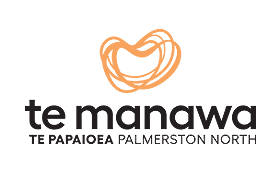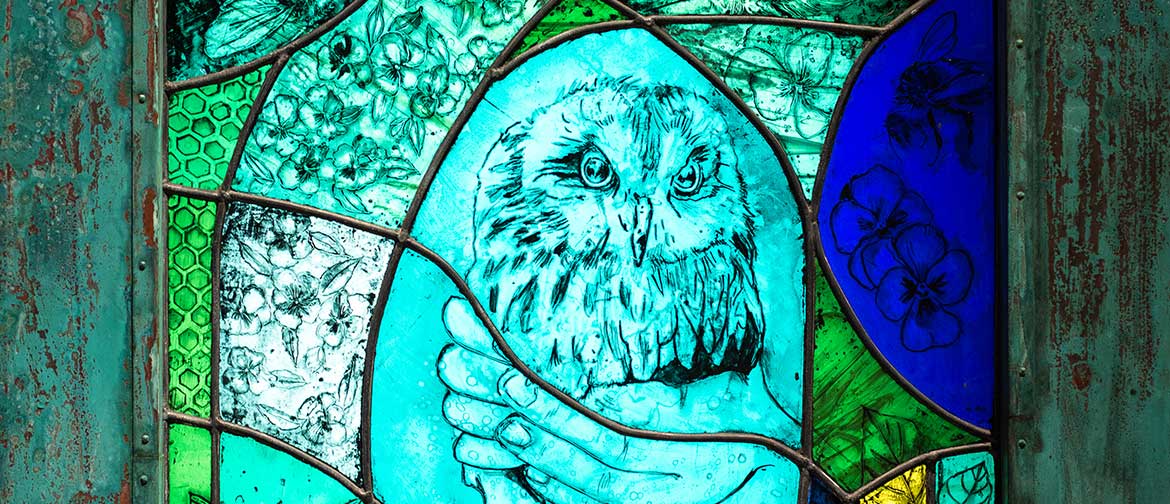The door is a found object that I picked up when I was thinking about how to represent the idea that if women leave then they’re safe. Because for most women, it might take up to seven attempts to leave before they actually do.
The outside of the door is covered in copper, which I’ve verdigrised. I have a friend, Andrew, who works with me on projects that involve metalwork, because he has all of the equipment and he’s really good at it. The outside is copper shim. There’s a bronze handle; I worked with a bronze-caster who’s now passed away, Ross, we created that together. We made a wax mould for it and cast it; that was an amazing process, really cool to go through, and it’s really special part of the door to me.
The inserts in the door are stained glass, which is something I’ve been doing for six or seven years, that I started as part of my PhD project. Using glass is quite conceptual for me: when you apply paint, it covers the entire surface and blocks the light, and removing the paint is what allows light to pass through. A big part of the kaupapa is that taking away darkness lets the light come in.
Does the identity of the birds on the glass have significance?
Very much so. There are three baby pīwakawaka on there; they’re my three children. There’s a nest, representative of the nurturing and caring I did in that space. There’s also a ruru, which has come into my work more recently. The ruru is symbolic of wisdom and that sense that I have a voice, which was always something I’d never felt – art-making has been my voice for the past decade. Recognising that being older and the power of being able to say what I’ve needed to through my work with WAI over the last few years – that’s what the ruru represents. The other one that’s in there is the heron; because I live at the beach, the heron flies over quite regularly. Birds for me are always representative of freedom.
There are many different style of metalworking, was each tricky to achieve?
For me it was a drawing, so not that tricky! Andrew did the metalworking; I just drew up what I wanted. That’s the cool thing about an exhibition like this, with Creative New Zealand funding we’ve been able to undertake work that would normally just be a dream for us. Normally we’re scrimping and trying to find money everywhere else to do the basics, but we had the ability to outsource some of the really hard things, like the door frame. It let us develop some structures that we could then put our work around. It’s been a massive boost.
To do an exhibition like this, the team here at Te Manawa have been amazing. The investment that they made into our work to present it as professionally as possible has been huge for us; it’s made us feel really respected and each woman’s work has been honoured. I think often when you’re a community art group you’re seen as a community art group, so there’s not an expectation that the work is elevated like this has been. Creative New Zealand’s investment that they’ve made into us has really paid dividends. As a tenth birthday exhibition it’s a big deal for us, and it’s a big deal for those who’ve supported us.
I’m proud of the door. It says what I wanted it to say. I’m used to the effect that stained glass has because I have it sitting around the studio, and I’ve got windows outside the studio that I’ve made as well. But there’s something really powerful about light and glass; it’s almost a spiritual experience to stand in front of something like that, that allows light through. I don’t know how it feels for anyone else, but it’s something I feel is very special and I love working in it.




